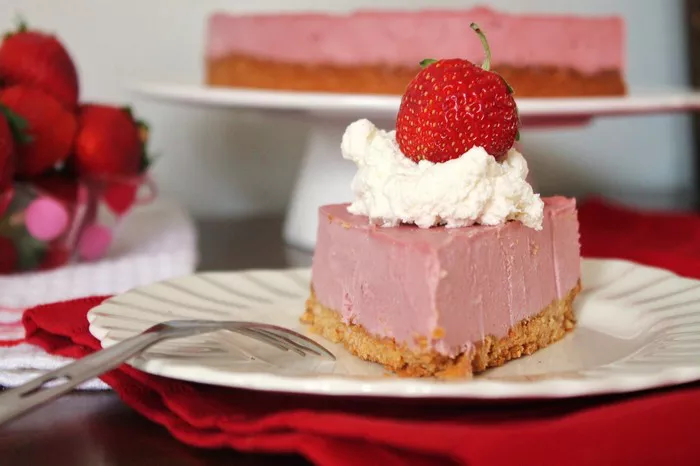Butter has long been a staple in cooking and baking, adding richness and flavor to a wide range of dishes. However, for various reasons—whether due to dietary preferences, health concerns, or lactose intolerance—many individuals are seeking alternatives to butter. Fortunately, there is an array of flavorful and nutritious substitutes that can be used in place of butter, while still achieving the desired taste and texture in your culinary creations. In this article, we will explore a variety of options that can replace butter in your cooking and baking endeavors.
Understanding the Role of Butter in Cooking and Baking
Before delving into the alternatives, it’s important to understand the role that butter plays in cooking and baking. Butter serves several functions, including:
Flavor Enhancement: Butter contributes a rich and creamy taste that enhances the overall flavor profile of dishes.
Texture and Moisture: In baking, butter adds moisture, tenderness, and a desirable crumb texture to baked goods.
Binding and Emulsification: Butter helps bind ingredients together and create a smooth, emulsified consistency in sauces and dressings.
Browning: Butter aids in browning and caramelization, imparting color and depth of flavor to foods.
Lubrication: Butter prevents sticking and provides a non-stick surface in pans and baking dishes.
Healthy Alternatives to Butter
When looking for alternatives to butter, consider options that offer similar functionalities while aligning with your dietary needs and preferences. Here are some delicious and healthier substitutes to consider:
1. Olive Oil: Heart-Healthy Elegance
Olive oil is a versatile and heart-healthy alternative to butter. Its monounsaturated fats can help promote healthy cholesterol levels and reduce the risk of heart disease. Choose extra virgin olive oil for its robust flavor and use it in sautéing, roasting, and drizzling over dishes.
2. Coconut Oil: Tropical Indulgence
Coconut oil is known for its distinct flavor and can be used as a butter substitute in both cooking and baking. It solidifies at cooler temperatures, making it suitable for creating flaky pie crusts or adding a tropical twist to dishes.
3. Avocado: Creamy Goodness
Avocado offers a creamy and nutrient-rich alternative to butter. Its healthy fats contribute to a luscious texture, making it an excellent choice for spreading on toast or adding to smoothies. Avocado can also be used in baking to create moist and delicious treats.
4. Nut Butters: Nutty Delights
Nut butters, such as almond butter, cashew butter, or peanut butter, can replace butter in both sweet and savory dishes. They add a nutty richness while providing protein and healthy fats. Nut butters are great for spreading, dipping, and adding depth to sauces and dressings.
5. Greek Yogurt: Creamy and Tangy
Greek yogurt offers a tangy and creamy texture that works well in both cooking and baking. It can be used to add moisture and a hint of tartness to muffins, pancakes, and sauces. Greek yogurt is also a protein-packed option for spreading on toast or using as a base for dips.
6. Applesauce: Natural Sweetness
Applesauce serves as a lower-fat alternative to butter in baking, particularly in recipes like muffins, quick breads, and cakes. It adds natural sweetness, moisture, and a subtle apple flavor to your baked goods.
7. Silken Tofu: Smooth and Protein-Rich
Silken tofu, when blended until smooth, can mimic the creamy texture of butter. It’s an excellent choice for creating dairy-free creamy sauces, dressings, and desserts. Silken tofu is also a source of plant-based protein.
8. Buttermilk: Tenderizing Agent
In recipes where butter is used for moisture and tenderness, buttermilk can be a suitable substitute. It works well in baked goods like pancakes, waffles, and biscuits, providing a mild tang and promoting a tender texture.
9. Vegetable Oil: Neutral and Versatile
Vegetable oils, such as canola, sunflower, or safflower oil, can replace butter in a variety of recipes. They are neutral in flavor and work well in cooking, baking, and sautéing.
10. Nutritional Yeast: Vegan Cheesy Flavor
For a dairy-free option that adds a cheesy and umami flavor, consider nutritional yeast. It can be used to create vegan “cheese” sauces, sprinkle over popcorn, or enhance the flavor of roasted vegetables.
11. Mashed Bananas: Natural Sweetness and Moisture
Mashed bananas can replace butter in baking recipes, especially in those that call for a moist and sweet texture. Bananas add natural sweetness and moisture, making them an ideal choice for muffins, cakes, and quick breads.
12. Aquafaba: Whipped Wonders
Aquafaba, the liquid from canned chickpeas, has gained popularity as an egg white replacement. It can also serve as a butter substitute in certain recipes, such as vegan meringues and whipped toppings.
13. Ghee: Clarified Butter
If lactose intolerance is the primary concern, ghee may be an option. Ghee is clarified butter from which the milk solids have been removed. It retains the rich flavor of butter and can be used in cooking and baking.
Tips for Successful Substitution
When substituting alternatives for butter, consider these tips to achieve the best results:
Flavor and Texture: Choose substitutes that complement the flavor and texture of the dish you’re preparing.
Consistency: Keep in mind that different substitutes may have varying consistencies at room temperature and when heated.
Proportions: In baking, some trial and error may be required to determine the right proportions for substitutions. Start by replacing a portion of the butter and adjust as needed.
Binding Agents: For binding and emulsification purposes, consider using ingredients like yogurt, buttermilk, or mashed fruits.
Taste Test: Before using a substitute in a large batch, conduct a taste test to ensure you’re satisfied with the flavor and texture.
Quality Ingredients: Opt for high-quality substitutes to ensure optimal flavor and nutritional value.
Conclusion
Replacing butter in your culinary creations doesn’t mean sacrificing taste or texture. With a wide range of flavorful and nutritious alternatives, you can explore new dimensions of cooking and baking while aligning with your dietary preferences and health goals. Whether you choose olive oil, coconut oil, nut butters, or any other substitute, the key is to experiment, adapt, and savor the creative possibilities that each option brings to your kitchen. By making mindful and delicious choices, you can continue to enjoy your favorite dishes while exploring a world of culinary versatility.
























